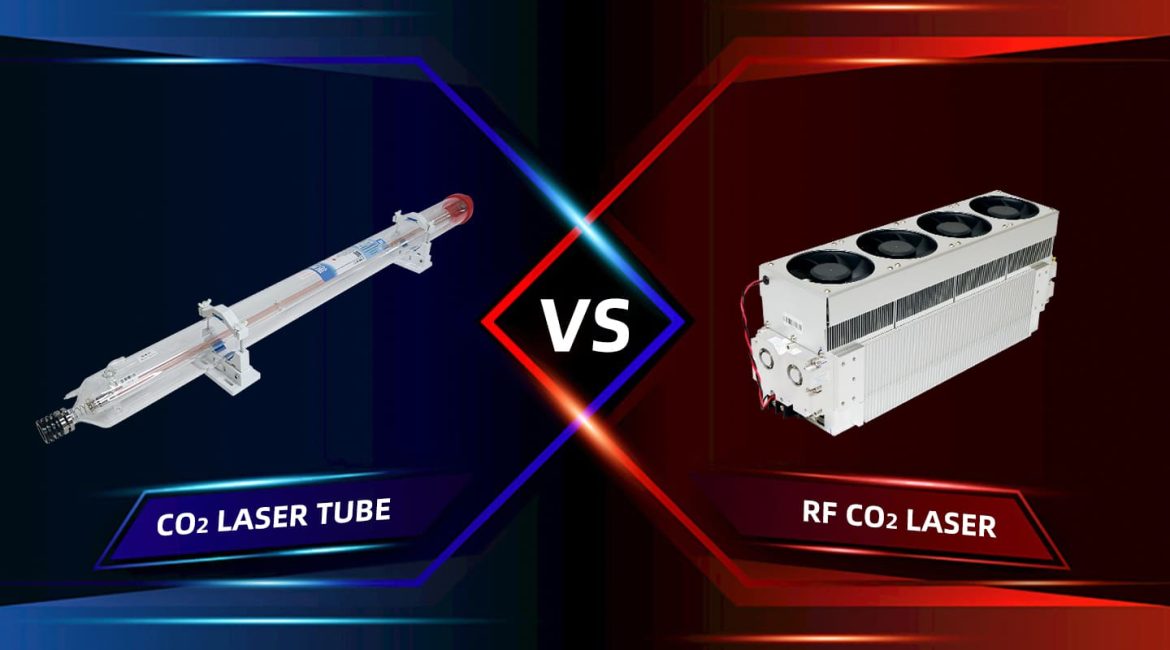In the world of laser processing, DC (Direct Current) lasers and RF (Radio Frequency) lasers represent two distinct technological approaches. Indeed, they not only come with different price points, but they also determine the performance limits and application possibilities of your equipment. Therefore, to make a wise investment, we must understand the fundamental principles of each laser type and consider leading brands in the market.
DC Lasers: The Economical and Entry-Level Choice
As the name suggests, a DC laser utilizes direct current as its energy source. It generates a stable, strong electric field between the ends of a glass tube using high-voltage DC power. This field then continuously excites a mixture of carbon dioxide gases within the tube to produce a laser beam. Although this technology is mature and cost-effective, its beam pattern is often multi-mode. Consequently, this means the energy distribution is uneven, which leads to lower precision in engraving and cutting. Furthermore, its power control depends on the current level. And, at low power, the discharge becomes unstable, making it difficult to achieve fine and detailed work.
If you are an individual user or a small workshop with a limited budget and primarily engaged in basic cutting and simple engraving, and if you can accept occasional maintenance and replacements, then a DC laser is likely your ideal and affordable choice.
Yongli CO2 Lasers: Yongli CO2 lasers hold a significant position in the DC laser market due to their reliable quality and competitive pricing. In fact, known for their stability and high cost-performance ratio, they are the first choice for many laser equipment integrators (As Series / H Series / R Series / C Series / Q Series / Combined Series).
RF Lasers: The Precision and High-Performance Option
On the other hand, RF lasers operate very differently. They use radio frequency alternating current to drive the laser. The RF power supply generates a high-frequency oscillating electromagnetic field through external electrodes, effectively “massaging” the gas molecules at a high frequency. Undeniably, the advantage of this excitation method is clear. It can produce a nearly perfect TEM00 mode beam. This means the beam spot is fine and the energy is concentrated. Therefore, this results in more precise engraving and smoother cutting. Moreover, the RF power supply can output pulses at extremely high frequencies. Consequently, this allows for extremely precise laser power control, enabling it to easily handle a variety of complex tasks, from micron-level marking to deep cutting.
If you are a professional user or an industrial manufacturer who demands the highest precision, speed, and reliability, then the initial investment in an RF laser will bring you greater productivity, more reliable performance, and superior product quality. Because of these benefits, the RF laser is often the better choice.
Yongli RF Lasers: Yongli is committed to providing users with cost-effective RF laser solutions. Yongli RF lasers are known for their excellent performance in marking, engraving, and precision cutting. Additionally, their products have a compact design, making them easy to integrate into various types of equipment (30W Series / 40W Series / 50W Series / 60W Series / Air-Cooled Series).
In Conclusion: Choosing the Right One is Key
Ultimately, there is no absolute “good” or “bad” choice. The best laser is the one that suits your specific needs. Between DC and RF lasers, your decision will determine the processing capabilities, operating costs, and final product quality of your equipment. Considering your business model and your expectations for the future, carefully weigh the pros and cons, and you will find the one that is right for you. If you need help with your purchase, feel free to contact us anytime.

